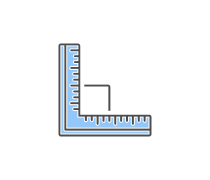How many significant figures are in this measurement: 0.00023 g
In the metric system, the base unit for length is
How many significant figures are in the measurement 0.00130 cm?
How many significant figures are in the number 4.153
How many significant figures are in the following number: 100
Convert the following into a regular number:8.55 x 10^1
How many significant figures are in this measurement: 0.00560 mg
Convert 350. mL to L
Solve the following, observing significant figure rules:56.3812 - 15
Solve 123000 x 3234
Which of the following is the largest mass?
Convert the following into a regular number:-9.37 x 10^-3
How many significant figures are in this measurement: 86.000 mL
Which of these is the shortest length?
Solve the following, observing significant figure rules:110.10 + 13 +...
After doing a calculation the display shows the number 3760.289 on the...
How many significant figures does the following number have: 2.40 x...
Solve the following, observing significant figure rules:9.00 x 0.200
When performing the calculation 34.530 g + 12.1 g + 1222.34 g, the...
Which of the following shows the correct scientific notation for the...
Convert 75 mL into cm^3
Convert the following measurement to scientific notation: 101000 grams
Solve this problem using the proper significant figures and scientific...
Solve the following, observing significant figure rules:0.01 + 5.632 +...
Solve the following, observing proper significant figures and...
Solve the following, observing significant figure rules:4256.4 / (150...
Round the following number to three significant figures: 0.90985
What is the volume of water shown in the graduated cylinder?
One meter contains how many micrometers?
How many millimeters are in 1 kilometer?
Which of these could be recorded as the mass on the balance in the...
How many significant figures are in this number: 10 x 10^3
Express 0.006580 in scientific notation.
Which of the following is the longest distance?
Solve the following, observing significant figure rules:25 x 0.05
Solve the following, observing significant figure rules:9.000 / 3.0
How many significant figures are in the following number: 1050.
Solve the following, observing significant figure rules:117 x 42.3
Solve the following, observing significant figure rules:8365 / 0.006
Solve the following, observing significant figure rules:40.972 / (24.4...
What is the length of the line in the image?
When measuring the length of this red line with the metric ruler...
What is the length of the red line in the image?
Which of the following conversions is/are incorrect? Select all that...
Which two of these are equivalent lengths?
Using the rules for significant figures, calculate the...
What is the length of the line in the image?
The mass of a glass was measured four times. The masses were 99.997 g,...
Match each number or calculation with the correct number of...
What is the volume in the graduated cylinder?










 Back to top
Back to top






